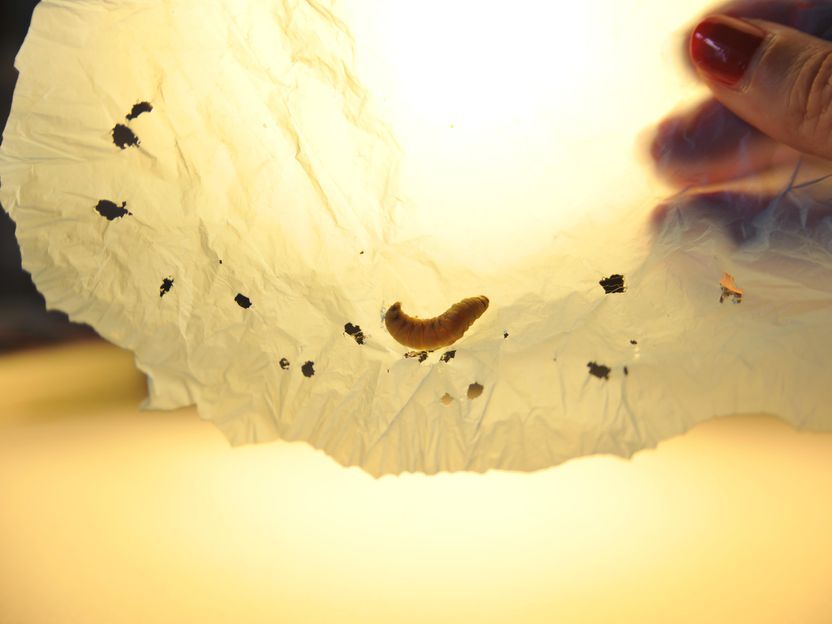A droplet's pancake bounce
New discovery about how surface gradients influence droplet behavior may enable novel surfaces
Studies of the impact a droplet makes on solid surfaces hark back more than a century. And until now, it was generally believed that a droplet's impact on a solid surface could always be separated into two phases: spreading and retracting.
But it's much more complex than that, as a team of researchers from City University of Hong Kong, Ariel University in Israel, and Dalian University of Technology in China report.
"During the spreading phase, the droplet undergoes an inertia-dominant acceleration and spreads into a 'pancake' shape," explained Zuankai Wang, an associate professor within the Department of Mechanical and Biomedical Engineering at the City University of Hong Kong. "And during the retraction phase, the drop minimizes its surface energy and pulls back inward."
Remarkably, on superhydrophobic surfaces such as lotus leaves, droplets jump off at the end of the retraction stage due to the minimal energy dissipation during the impact process. This is attributed to the presence of an air cushion within the rough surface.
There exists, however, a classical limit in terms of the contact time between droplets and the superhydrophobic materials inspired by lotus leaves.
It's possible to shape the droplet to bounce from the surface in a pancake shape directly at the end of the spreading stage without going through the receding process. As a result, the droplet can be shed away much faster.
"Interestingly, the contact time is constant under a wide range of impact velocities," said Wang. "In other words: the contact time reduction is very efficient and robust, so the novel surface behaves like an elastic spring. But the real magic lies within the surface texture itself."
To prevent the air cushion from collapsing or water from penetrating into the surface, conventional wisdom suggests the use of nanoscale posts with small inter-post spacings.
What the New Results Show
Despite exciting progress, rationally controlling the contact time and quantitatively predicting the critical Weber number – a number used in fluid mechanics to describe the ratio between deforming inertial forces and stabilizing cohesive forces for liquids flowing through a fluid medium – for the occurrence of pancake bouncing remained elusive.
So the team experimentally demonstrated that the drop bouncing is intricately influenced by the surface morphology. "Under the same center-to-center post spacing, surfaces with a larger apex angle can give rise to more pancake bouncing, which is characterized by a significant contact time reduction, smaller critical Weber number, and a wider Weber number range," according to co-authors Gene Whyman and Edward Bormashenko, both professors at Ariel University.
The team's novel surfaces feature a shortened contact time that prevents or slows ice formation. "Ice formation and its subsequent buildup hinder the operation of modern infrastructures--including aircraft, offshore oil platforms, air conditioning systems, wind turbines, power lines, and telecommunications equipment," Wang said.
At supercooled temperatures, which involves lowering the temperature of a liquid or gas below its freezing point without it solidifying, the longer a droplet remains in contact with a surface before bouncing off the greater the chances are of it freezing in place. "Our new surface structure can be used to help prevent aircraft wings and engines from icing," he said.
Original publication
Yahua Liu, Gene Whyman, Edward Bormashenko, Chonglei Hao and Zuankai Wang, "Controlling drop bouncing using surfaces with gradient features", Applied Physics Letter, 2015
Original publication
Yahua Liu, Gene Whyman, Edward Bormashenko, Chonglei Hao and Zuankai Wang, "Controlling drop bouncing using surfaces with gradient features", Applied Physics Letter, 2015
Organizations
Other news from the department science

Get the chemical industry in your inbox
By submitting this form you agree that LUMITOS AG will send you the newsletter(s) selected above by email. Your data will not be passed on to third parties. Your data will be stored and processed in accordance with our data protection regulations. LUMITOS may contact you by email for the purpose of advertising or market and opinion surveys. You can revoke your consent at any time without giving reasons to LUMITOS AG, Ernst-Augustin-Str. 2, 12489 Berlin, Germany or by e-mail at revoke@lumitos.com with effect for the future. In addition, each email contains a link to unsubscribe from the corresponding newsletter.



























































